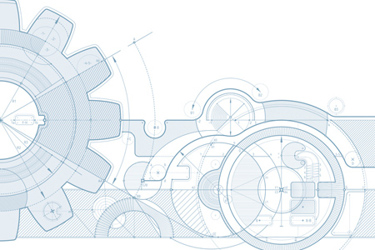Does My Medical Device Design Actually Work?
By Alex Vasiev, principal engineer, Springboard pro

There are few experiences that can surpass the joy of seeing a product you developed reach manufacture. But before that, you face the non-trivial task of proving your current embodiment can actually work and meet its design intent. This stage, often referred to as the "proof of feasibility," serves as a bridge between conceptualization and detailed development, providing crucial evidence that your approach is the right one and will result in a safe, compliant, and effective product.
This part of the development process often includes preliminary testing, but also detailed technical, usability, manufacturability, regulatory, and commercial assessments, which feed into an overall appraisal of the residual risk associated with the design.
Proving Feasibility
Ensuring the feasibility of a medical device design is a multi-step process that requires careful planning and execution.
“The valid scientific evidence used to determine the effectiveness of a device shall consist principally of well controlled investigations.” — 21 CFR 860.7(e)(2)
A first step is creating a comprehensive framework by which to assess whether the proposed design solution can meet the needs of its design intent. A potential methodology involved in proving feasibility is presented below:
- Prototyping: Investing in expensive processes can be prohibitive when evaluating feasibility as the risk of changes is still relatively high. Creating prototypes to test the physical and functional aspects of the design is an effective strategy to balance technical and commercial risk. This step helps in identifying any unforeseen technical issues and allows for mitigation before processes and designs become inflexible.
- Simulation and Modelling: Using computational tools to simulate the device's performance in various scenarios is crucial in ensuring you make well-informed decisions ahead of excessive testing. This step helps predict how the device will behave in real-world and extreme conditions without spending excessive time and resources on testing, which instead can be made more targeted to validate the earlier modelling approach.
- Preliminary Testing: Preliminary testing gathers data on performance, durability, and safety from a representative design embodiment. These tests can include testing of mechanical stresses, operational forces, biocompatibility, and electrical safety.
- Stakeholder Feedback: Engaging with healthcare professionals, patients, and other stakeholders provides some of the most critical feedback on the design. This research can provide valuable insights into the device’s future usability and clinical relevance.
- Documentation and Reporting: Compile all findings into a comprehensive feasibility report that outlines the evidence supporting the current design embodiment and its residual risk profile. This report guides internal decision-making and discussions with external agents and regulators.
- Conceptual Design Review: The design concept and feasibility report are reviewed by a multidisciplinary team to identify potential challenges and areas needing further development. Effective and well-documented design reviews and decisions are the foundation of design controls and need to be done well even at the early stages of development.
The Devil Is In The Details
The successful execution of the stage between proof of feasibility and the start of industrialization is crucial to reducing the overall time to market. The time and cost of inefficiency at this stage can have a large impact on development projects. This is one of the reasons why the review and risk management processes need to be effective at preventing designs with excessive residual risk from proceeding to later stages of development. This stage is often referred to as detailed design and includes a much larger focus on design for manufacture and assembly (DFMA), where the initial proof of concept is refined into a product that can be reliably and cost-effectively mass-produced.
1. Design Refinement for Manufacturability
- De-risk design transfer: The implementation of a design solution (function) can differ from what is practical to handle in large-scale production. Clear and effective communication between design and industrialization teams allows the design intent to be clear, and that makes subsequent operations more efficient.
- Standardization: The use of standard components where.ver possible can have tremendous impact on costs as custom parts influence supply chains and testing burdens later on.
- Design and Material Rationale: Choosing the right materials that balance function, cost, compliance, robustness, and compatibility with any secondary and tertiary processes, including sterilization, can be a challenge. Settling for medical grades and evaluating the chemical compatibility and impact on sustainability targets early helps avoid late-stage material changes.
- Tolerance Analysis: Ensuring that the design tolerances can be consistently achieved during mass production is essential. This involves detailed analysis and often iterative prototyping and testing.
- Failure Modes and Effects Analysis (FMEA): A systematic evaluation of potential failure modes and their impact on the product helps in designing out potential problems and ensuring reliability.
2. Technical Evaluation(s)
- Progressive Evaluation: Test the design solution (output) to understand how well it meets the design inputs. When taking place under design controls, it can be referred to as engineering verification or pre-verification. Evidence can include the outputs of simulation, implicit evidence, and test data, with a focus on the highest foreseeable risks. This may be informed by the applicable standards and the intended path to regulatory approval.
3. Process Optimization
- Manufacturing Processes Optimization: This includes running processes such as moulding machines and assembly equipment at a range of conditions to recreate long-term manufacturing variability ahead of qualification to understand their operating window.
- Design Optimization: This might involve reducing the number of parts, introducing poke-yoke features, removing redundant inspection steps, or designing for automated assembly to reduce labour costs and waste, and increase throughput.
- Equipment and Process Ergonomics: Especially in manual or semi-automated processes, this activity helps mitigate the risk of downtime through poorly laid out workflows and a lack of consideration for ergonomics form an operator perspective. The use of virtual reality (VR) and augmented reality (AR) to walk through processes can be a useful resource during development.
4. Cost Management
- Cost-Benefit Analysis: Every design decision is weighed for its impact on the overall cost. This includes evaluating alternative materials, manufacturing methods, and assembly techniques to find the most cost-effective solution.
- Economies of Scale: Understand how production volume affects cost. The design is optimized to take advantage of economies of scale, reducing the cost per unit as production increases.
5. Regulatory Compliance
- Regulatory Requirements: Ensure that the design meets all relevant regulatory standards and guidelines for medical devices. This includes compliance with FDA rules and regulations, EU MDR, ISO standards, and other relevant regulations, depending on the market being targeted.
- Documentation and Testing: Develop comprehensive documentation and rigorous testing protocols to demonstrate compliance and facilitate regulatory approval.
6. Supply Chain Development
- Supplier Selection: Identify and partner with reliable suppliers who can deliver materials and components at the required quality and volume. This may also require finding multiple suppliers to reduce the risk of supply chain disruptions due to single-source failures.
- Logistics Planning: Develop a logistics strategy to ensure a smooth flow of materials and components to the manufacturing site and finished products to the market.
7. Pilot Production and Validation
- Pilot Runs: Conduct pilot production runs against the production plan to qualify the manufacturing process and identify any issues before full-scale production begins, and to produce small batches for exploratory, pre-pivotal clinical trials.
- Process Validation: Ensure that the manufacturing process produces products that meet all specifications consistently over production-representative runs. This includes machinery, processes, and quality control measures.
Without this critical development stage, transitioning directly from proof of feasibility to full-scale production is likely to result in numerous issues such as high failure rates, excessive costs, regulatory non-compliance, and ultimately, product failure before it ever reaches clinic. Proper development work ensures that the design is robust, manufacturable at scale, and cost-effective.
In conclusion, proving feasibility is a critical first step in the medical device design process, serving as a foundation for subsequent development stages. By thoroughly evaluating the technical, regulatory, and market aspects of a design, companies can ensure that their devices are not only innovative but also safe, effective, and commercially viable.
About The Author:
 Alex Vasiev, Ph.D., is a principal biomedical engineer specializing in medical device development at Springboard Pro. With a broad multidisciplinary background, he has focused on drug delivery, contributing to the development of novel microcarriers, hydrogel matrices, patch pumps, inhalers, and several high-viscosity autoinjectors. He previously served as manager of device development at Oval Medical Technologies.
Alex Vasiev, Ph.D., is a principal biomedical engineer specializing in medical device development at Springboard Pro. With a broad multidisciplinary background, he has focused on drug delivery, contributing to the development of novel microcarriers, hydrogel matrices, patch pumps, inhalers, and several high-viscosity autoinjectors. He previously served as manager of device development at Oval Medical Technologies.
